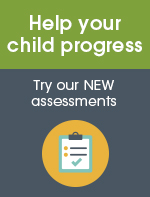chapter3
Once you’ve mapped your curriculum for a year’s home teaching and you know you can provide a seamless start-to-finish module of learning, you need to focus on how to actually deliver learning in each session.
This chapter is an overview on how to facilitate learning, focusing on just a few basic priniciples.
Basic Principles
 As mentioned in the last chapter, learners of all ages learn through doing. It is essential that, for effective teaching to happen, the tasks that children are set must be active. This doesn’t necessarily mean running around, but any lessons that centre solely on teacher activity is most likely to be a complete waste of time. Resist the urge to be the ‘sage on the stage’, to stand in front of your learners and read from a book, or tell them all the things you know; it won’t go in, or if it does, it will be remembered in a superficial way.
As mentioned in the last chapter, learners of all ages learn through doing. It is essential that, for effective teaching to happen, the tasks that children are set must be active. This doesn’t necessarily mean running around, but any lessons that centre solely on teacher activity is most likely to be a complete waste of time. Resist the urge to be the ‘sage on the stage’, to stand in front of your learners and read from a book, or tell them all the things you know; it won’t go in, or if it does, it will be remembered in a superficial way.
Resist the urge to be the ‘sage on the stage’, to stand in front of your learners and read from a book.
Instead, think of the brain as a natural problem solving machine. The brain loves problems and actually grows as it is faced with them. If you are in any doubt, look how popular children’s puzzle books, crosswords, word searches or simple games of hide and seek are.
So, all lessons should focus around pupil activity, and all lessons should present the pupil with a stimulating challenge. If you are home schooling more than one child, this is an advantage, because children can then collaborate with one another to work out an answer to the question or challenge.
Try not to ask ‘did’ you understand that?’, as most learners will try to please their teacher by saying yes.
Lesson Structure
A simple structure for your lesson might look something like this (here is an example of a history lesson):
1 Lesson Starter (10 Minutes)
This is a short, fun, active introduction to the lesson that is related to the topic. If you were teaching about the Norman Conquests to Key Stage Three learners, perhaps an appropriate type of exercise would be to give them a mixed up series of cards with key events from the historical narrative, which need to be quickly re-arranged into the right order, with the pupils arguing why their version of events is right.
2 Main Exercise (30-40 Minutes)
 Now you have got your child switched on, focused and engaged, you are into your window of peak learning, which is about half an hour to forty minutes. This time is precious, so don’t clog it up with too much talk, you need to give the learner a sufficient amount of information in a handout, book, DVD or website so they have knowledge from which to learn, but you aren’t so much driving towards filling them with facts as teasing out a judgement or evaluation. Your lesson needs to have a key question, such as ‘Why did William win at the Battle of Hastings?’ or ‘What were the consequences of William’s victory for England?’, otherwise it is just a process of chewing through facts, and if your learner doesn’t find that boring, you will!
Now you have got your child switched on, focused and engaged, you are into your window of peak learning, which is about half an hour to forty minutes. This time is precious, so don’t clog it up with too much talk, you need to give the learner a sufficient amount of information in a handout, book, DVD or website so they have knowledge from which to learn, but you aren’t so much driving towards filling them with facts as teasing out a judgement or evaluation. Your lesson needs to have a key question, such as ‘Why did William win at the Battle of Hastings?’ or ‘What were the consequences of William’s victory for England?’, otherwise it is just a process of chewing through facts, and if your learner doesn’t find that boring, you will!
3 Plenary Session (5-10 Minutes)
A plenary session is where you assess whether the learning has been effective, and it’s a nice conclusion to the lesson that gives the learner a sense of resolution. In this last ten minutes, try not to ask ‘did you understand that?’, as most learners will try to please their teacher by saying yes, even if they didn’t. Instead, you need to coax the learner into ‘teaching’ you; by asking them bigger questions that ascertain what meaning or conclusions they can draw from the lesson, you’ll know how much learning really happened.
Let this guide be the very beginning of your journey into teaching practice. It's a fascinating area and very rewarding to understand.
